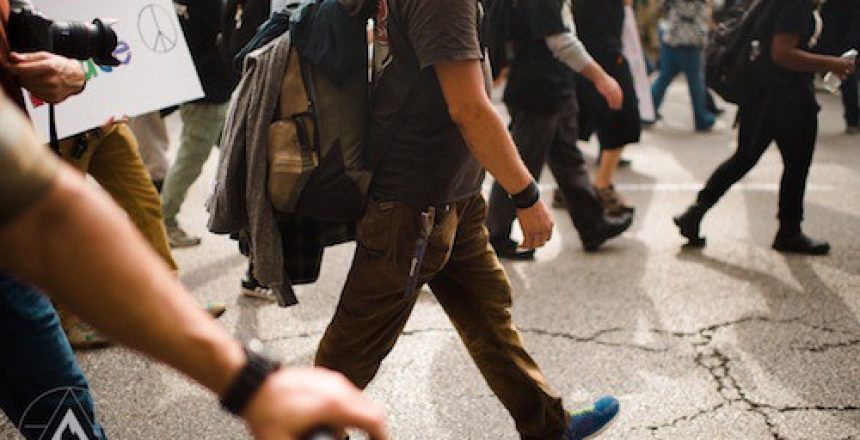What’s Your Escape Plan?
-
Can you get away?
-
Can you get out?
An escape route or plan is not just one way out. You have many places you need to get away from.
All escape plans have several things in common:
-
A way to get out as safely as possible
Getting out of a house is not the same thing as getting out of a neighborhood. Have plans to get away for everything from your house to the city.
-
A route out
Plot the route you will take during an emergency. Make sure everyone knows it. If you are trying to get out of the neighborhood or a city, you may need more than one route.
-
You and the people important to you may get separated. Cell phones may not work and landlines are out because of the destruction. Think about alternative messages. Write a message on a car window with lipstick. Pack colored surveyor’s tape in small bug-out bags with crank flashlights and emergency food. Tie the tape to just about anything. It looks like something official, so no one will remove it.
-
A rendezvous location for everyone
Plot rendezvous points where you can wait for family members. You need more than one. If a tornado comes through, even moving five blocks west could be impossible because of downed power lines.
HOME PLAN
Getting out of your home has to be the first escape plan. Why do you need an escape plan? What if someone breaks in? What if a fire breaks out? What if a natural disaster comes through? If a tornado drops a tree on the house, what will your family do?
Here is a checklist:
-
Make sure all windows can be opened from the inside. Painters sometimes seal windows. Here’s a guide to opening a sealed window.
-
Make sure all the doors are easy to get to. Use deadbolts on the inside with a knob. Looking for a key in an emergency is not a good idea.
-
For multi-story homes have a fire escape ladder next to a window in each bedroom. Make sure everyone the house knows how to use it.
-
Have a place to gather away from the house. Talk to neighbors. Mutual aid is a good thing. If they have a problem, they come to your house. You have a problem, your family goes to their house.
WORK OR SCHOOL PLAN
Know where all the emergency exits are. Make sure they are clear. If they are not clear, then clear them. If the boss or anyone else objects, stop what you are doing. When you get away from other people, call the local fire department or building code inspection office and file an anonymous complaint. Keep complaining until something is done.
Let people important to you know where you will go if you leave because of an emergency.
Find some people who can be counted on in an emergency. You may need their help in clearing a way out.
Your way out should be away from multi-story buildings. Falling buildings are dangerous. If your vehicle is in a parking garage, leave it. If the garage is still standing, a panicked exodus means traffic jams. You don’t have time to wait for that to clear.
Once you do get out, get to a check-in station or rendezvous location. For the office or school, the rendezvous point needs to be within walking distance. You might not have a vehicle.
THE COMMUNITY
Hurricanes are a disaster, but one you have time to plan around. Pack and get out before it hits. Some disasters, like tornados, don’t give a warning. By the time you get word that the twister is on the way, it is either on you, past you or missed you.
Look around your neighborhood. Now imagine trees and live power lines lying across the roads and yards. Short of a monster truck or a tank, no passenger vehicle will get out. A motorcycle might manage.
You need to plot a way out on foot. That means crossing yards, going over, around or through fences. Because you will be going through yards, you will have to deal with dogs. Small bug out bags need to have a can of mace or dog repellent.
THE CITY
Leaving the city is getting out on a different level by orders of magnitude. If this is a serious collapse of everything, get out and get to your safe locations outside the city. Use whatever vehicles are handy and drive them as far as you can. Keep moving is the key
If you have time, think hurricane, then pack and leave. Get away from the expected path. Make sure you take tents and sleeping gear because hotels on either side of the storm for hundreds of miles around will quickly fill.
The problem in both cases is the main roads are packed. Sometimes, the Department of Transportation will open both sides of interstates and major roads to let people drive the same direction away from the disaster area. Roads will still be jammed and traffic will move at a crawl.
Find other roads, Use small back roads. On paper, it may take longer. In reality, these roads may have slightly more than the usual amount of traffic. You will make far better time on side roads and country roads.
We welcome your suggestions and ideas. Let us hear from you on your comments below.




1 thought on “Escape routes. How will you get out? Where will you go?”
Well, there are fold up bicycles that can be stored in the trunk. Presumably (and since) every joint and link is a potential weak spot, these may not be so durable, but it may well provide a convenient storable alternate means of transportation and "weight carry" (of bags and tie downs) in the event that your car is stuck (way toooo long).
YOUR POWER — WHERE IS IT? Aside from mental planning power, your power of reach is ONLY (1) your line of sight and, (2) your power of touch (in the sense of arm touch); in other words as far as you can swing your arm, or hold something, or throw something. YOUR POWER OF REACH IS NOT VERY FAR. You could add your power of speech, in the sense of screaming for help; but anyone who hears you will understand your sense of need, but necessarily understand why you need help (nor where you are located), and listeners will be hesitant until they understand what is happening to you (if they can even find you, among others). So, you do have to plan each step, or if you prefer–each 50 yards or 100 yards (your line of sight) along your intended escape route, while anticipating what types of obstacles you may experience and how you intend to deal with them should you come across them..
Comments are closed.